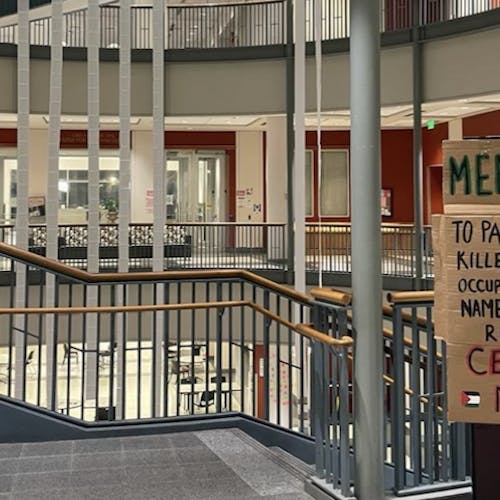Rutgers researchers develop automated blood drawing robot

Researchers at Rutgers have created and conducted the first clinical trial for a robot designed to draw blood more effectively than humans, according to a recent University press release.
The handheld device is meant to do venipuncture procedures, said Josh Leipheimer, lead author and a School of Graduate Studies doctoral student.
“Venipuncture is the process of drawing blood or it’s placing an IV catheter for intravenous therapy,” he said. “Those are the two really big realms and two of the most common medical procedures performed worldwide.”
Leipheimer said venipuncture can be difficult for clinicians, especially in people with dark skin or rolling vessels, and in populations like small children and the elderly. These situations can lead to multiple needlesticks, pain and discomfort for the patient.
“It results in requiring alternative imaging devices to help the clinician or even requires additional personnel or going for a larger vessel somewhere else really to obtain just a simple blood draw,” he said.
Leipheimer said the goal of the device is to solve these issues by creating a one-stick blood draw device that is automated and easy to use, which the team did using ultrasound imaging.
“Basically the device is an ultrasound imaging probe combined with an attached miniaturized robotic needle manipulator that we designed and essentially how it works is the ultrasound imaging uses a sort of echolocation, it uses ... high frequency sound waves to image objects in the body,” he said. “For example, in our case we’re imaging the vessels in the arm.”
By using ultrasound technology, he said the device detects the blood vessels in the arm even if the clinician can not visibly see the vein.
“Once the vessel is found by the ultrasound, that’s where the robotics come in,” Leipheimer said. “It will actually use those vessel coordinates and perform the necessary needle alignments and then perform the needle insertion, where the needle is inserted into the vessel, safety, accurately and precisely.”
A common error in venipuncture, Leipheimer said, is double wall vessel puncture in which the needle travels too far and punctures both sides of the vessel.
He said to prevent this, the team added a force sensor to their needle that records forces during insertion.
“Measuring these forces, once we see the characteristic peak force, the software will be able to detect that this peak in force is associated with the vessel puncture and we will then say to halt the motors,” Leipheimer said.
The device has just gone through what he said is its phase 0 or phase 1 clinical trial that looked at device efficacy and safety.
The device had 87 percent venipuncture and blood draw success rate in the 31 volunteers, according to the study. Out of the 31, Leipheimer said 6 were described as having difficulty accessing veins. Taking that into account, the device had a 97 percent success rate, according to the study.
Leipheimer said the volunteers ranged from 20 years old to 60 years old.
He said the device is currently the size of the palm of your hand and is in its alpha-prototype stage.
“This is the general idea of what it is and it’s safe and it’s working,” he said. “The next step is to make the beta-prototype, so this will go through refinement, more miniaturization, making it easier to use and really a device that’s ready for clinical use.”
From there, he said the team hopes to conduct phase 2 and phase 3 clinical trials with 400 or more participants. Ideally, the device would be used in a hospital setting and would require little to no training to use.
“My vision is that it would be as simple as holding the device, placing it over a general insertion area — the area where you want to draw blood from for example. From there, the device will handle the rest,” he said. “It still has that human factor, it still has the clinician, it still has a person behind it. You can consider the handheld device to be a human supervised automated device.”
Leipheimer works in the Yarmush lab in the biomedical engineering department at Rutgers and said the project was started in 2009 with the idea of creating a point-of-care blood diagnostic system.
“The idea was you would go into a doctor’s office, you would have your blood drawn by this machine and then your blood would be analyzed and you would get white blood cell and red blood cell assays, cholesterol levels, the whole 9 yards all without having to wait for results or sending it off,” he said.
Today, Leipheimer says this project lets him connect his love for robotics from his undergraduate years with his interest in translational work.
“That aspect of the project, this is something that could be put into hospitals now, it was really inspiring to me,” he said. “I have an interest in robotics, this project involved robotics and it was clinical translational work, so it really hit all my major interest areas.”



